Main Japanese Candlestick Patterns: Trading Guide (2025)
Updated: 21.03.2025
Main Japanese candlestick patterns: reversal candlestick patterns and trend continuation patterns (2025)
In the last article we discussed the topic of “Japanese candlesticks”, in this article we will talk about the patterns that these candles form. Of course, in this article it will not be possible to fit all the candlestick formations, so I will talk about the most important and frequently used models.
If the pattern formed on a reversal, then you should also expect a strong upward price movement - the model indicates a serious advantage of the bulls, so the price will move up.
For a pattern to be a reversal, it must form at a strong support level! It would also be a good idea to wait for confirmation of the reversal, and only then enter into a rise.
There are many models - you should study them gradually. To begin, select 3-4 clear candlestick patterns and try to find them on the emerging charts and open trades on them. Once you are sure that these models are deposited in your memory, begin to study new formations and their practical use.
Contents
- Bullish Japanese candlestick patterns
- Abandoned baby - bull model
- Morning doji star
- Three inside up
- Three outside up
- Three white soldiers
- Breakaway candle
- Doji star
- Dragonfly doji
- Absorption (engulfing)
- Three stars in the south
- Hammer
- Ladder bottom
- Morning star
- Piercing line
- Three stars
- Belt hold
- Gravestone doji
- Inverted hammer
- Tweezers bottom
- Bearish candlestick patterns
- Abandoned baby – bearish model
- Dark cloud cover
- Evening doji star
- Evening star
- Three inside down
- Three outside down
- Advance block
- Breakaway candlestick
- Deliberation
- Downside tasuki gap
- Dragonfly doji
- Absorption (engulfing)
- Meeting lines
- Three stars
- Gravestone doji
- Hanging man
- Belt hold
- Harami
- Shooting star
- Harami cross
- Tweezers top
- Candlestick patterns: summary
Bullish Japanese candlestick patterns
By bullish Japanese candlestick patterns we mean those formations that will lead to further price growth. Very often you will encounter reversal patterns, and they will work best on support and resistance levels. If there are no such levels, and the model has formed “in the field,” then it is better to refuse to use the formation.Abandoned baby - bullish model (abandoned baby)
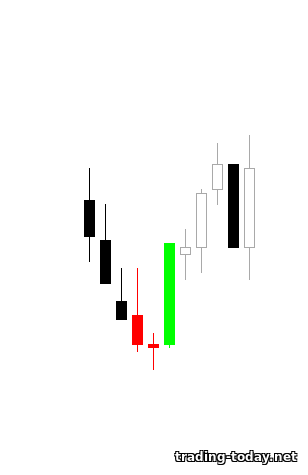
Morning doji star
The Morning Star Doji is also a Japanese candlestick pattern consisting of three bars. The first candle indicates a strong trend, the second candle is a doji (star) candle, the third candle is a reversal candle, but it is smaller than the first bearish candle. To confirm a reversal, you can draw a line for the maximum of the first candle and, when it breaks through, open a trade for an increase.Three inside up
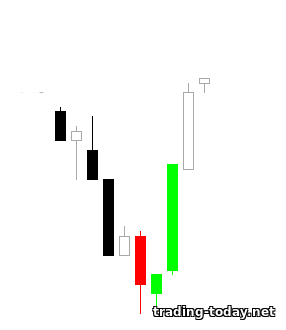
Three outside up
Three outside up – a model similar to the “absorption” model. The pattern starts with a bearish candle, which is immediately engulfed by a bullish candle (outside bar). It all ends with confirmation in the form of another bullish candle. Enter a trade immediately after the pattern is formed.Three white soldiers
Three white soldiers are three rising candles, forming one after another. This Japanese pattern is a trend continuation pattern, so it can form without support and resistance levels. The main thing is that the candles are approximately the same size and do not have large shadows on top. Enter the market immediately after the close of the third candle of the “Three White Soldiers” pattern.If the pattern formed on a reversal, then you should also expect a strong upward price movement - the model indicates a serious advantage of the bulls, so the price will move up.
Breakaway candle
Breakout candle – a pattern of 5 candles. The first four candles are downward. Closer to the fourth candle, the trend begins to slow down (the bears have hit a strong support level). The fifth candle is bullish and large-bodied. It absorbs the last three candles and closes at or above the middle of the first candle. Entry to go up immediately after the closing of the last candle of the pattern.Doji star
A Doji Star is a Doji candle formed after a downtrend. In fact, you should be very careful with this Japanese candlestick pattern. A Doji is not necessarily a reversal candle! It can also indicate the equality of strength between bulls and bears (candle of uncertainty), which means that the price, after a short break, can continue its trend movement.For a pattern to be a reversal, it must form at a strong support level! It would also be a good idea to wait for confirmation of the reversal, and only then enter into a rise.
Dragonfly doji

Engulfing
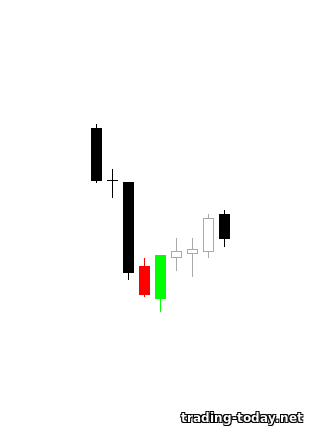
Three stars in the south
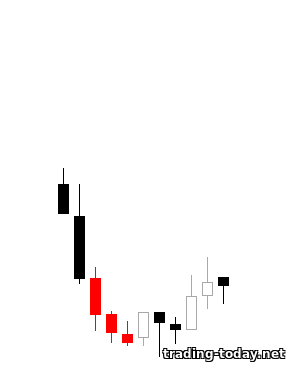
Hammer
A hammer is a type of pin bar. A small bear body and a long shadow (twice as long as the body). The candle signals that during the formation, the bears gave way to the bulls - if there was a little more time, “Pinocchio” would have formed. The hammer should be looked for at strong support levels. You can enter either immediately or after confirmation in the form of the next bullish candle.Ladder bottom
A stepped bottom is a candlestick pattern consisting of five candles. The first three candles indicate a falling price, the fourth candle is a downward candle with a long shadow on top and a small body, and the fifth candle is a reversal candle (it should be larger than the previous one and, preferably, close higher than the shadow of the previous candle).Morning star
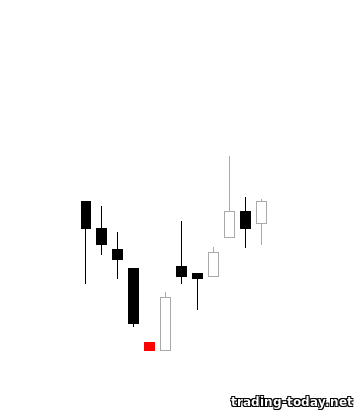
Piercing line
Piercing candle – the pattern consists of two candles. The first candle is downward and the second candle is bullish. The essence of the model is for the second candle to close above the middle of the first candle. The model may not work itself out right away, so you should wait for a candle that closes above the high of the first candle of the model and confirms the entry for a rise.Three stars
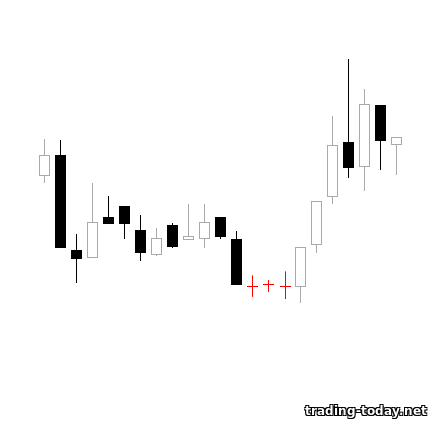
Belt hold
Belt grab – reversal candlestick pattern. The first candle of the pattern is a full-bodied downward candle, the second candle is a doji candle or a small red candle, the third candle is a large bullish candle that closes above the high of the first candle and has no shadows (or has but very small shadows). A strong bullish signal is entering a trade immediately after the formation of the last (third) candle.Gravestone doji
A tombstone doji is a formation that forms at the ends of a bearish trend or during pullbacks. The main candle in this formation is a doji with a shadow only on top. There should be a downward candle to the left of the doji, and an upward candle to the right. Entry for a rise after an ascending (confirming) candle.Inverted hammer
Reverse hammer is a reversal pattern consisting of three candles. The first candle indicates a falling price, the second candle is an inverted hammer (a candle with a small body and a long shadow at the top, no shadow at the bottom), the third candle is a reversal (rising) candle. It is better to filter this pattern with support levels or Fibonacci levels. Entry after a rising candle.Tweezers bottom
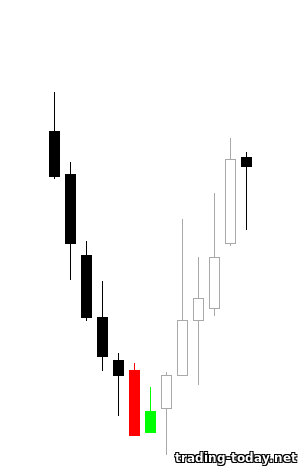
Bearish candlestick patterns
Bearish Japanese candlestick patterns are patterns, after the formation of which, the price falls. They should also be filtered by resistance levels or Fibonacci retracement levels, you can also use indicators predicting price reversals.Abandoned baby - bearish model (abandoned baby)
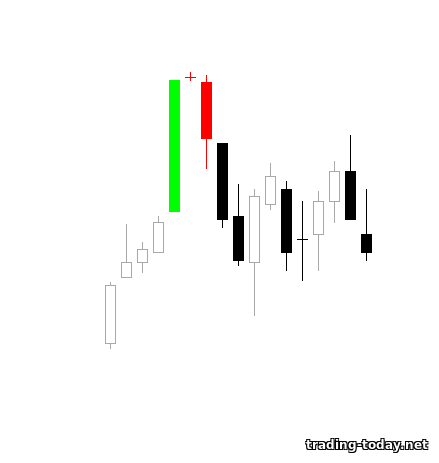
Dark cloud cover
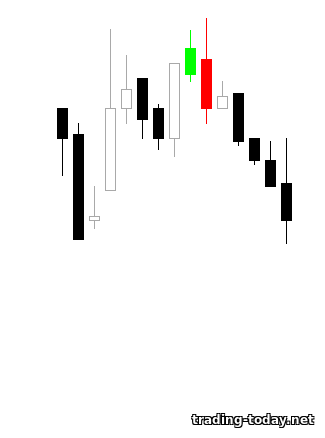
Evening doji star
Evening Doji Star is a candlestick pattern that forms only at the tops of trending movements. The price moves up, after which it encounters a strong resistance level, from which a reversal occurs. Enter down immediately after the formation of a pattern of three candles.Evening star
The evening star is exactly the same pattern as the “evening star-doji”, with one difference - instead of a doji, there is a small candle with a shadow on top (or just a small candle). Formed at the tops of upward trends.Three inside down
Three inside down – a reversal candlestick pattern, consisting of an inside bar and breaking through the boundaries of the mother candle against the current trend (breakdown downwards). Enter a bearish trade immediately after the formation of the third (confirming) candle.Three outside down
Three outside down is a variant of a reversal candlestick pattern with engulfing. The second candle engulfs the first bullish candle, and the third candle only confirms the price reversal. The model is quite strong and is formed at the tops of trend impulses. Entry immediately after the confirmation candle closes.Advance block
The repulsed offensive is three ascending candles, the last of which has a long shadow at the top. The fourth candle should be a reversal candle. It’s not bad at all if it forms a bearish CPR (breaks the high of the previous candle and closes below the opening price – as in the example above). Entry immediately after the formed reversal candle.Breakaway candlestick
A breakout candle is a formation of five candles. The first four candles are moving upward, the fifth candle is bearish. It should absorb the last three candles - a signal to open a downward trade.Deliberation
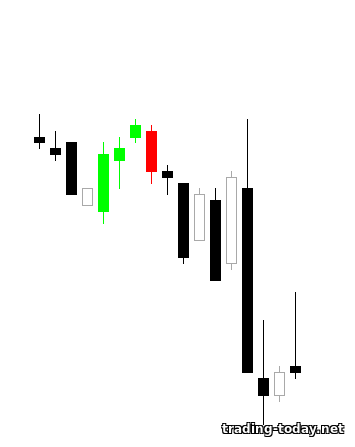
Downside tasuki gap
The lower tasuki gap is a candlestick pattern of three candles. The first and second candles are downward, the third candle is upward. The second candle is formed with a gap (the gap between the candles), the third candle begins to form approximately from the middle of the second candle. Enter a bearish position after the formation of the third candle.Dragonfly doji
Dragonfly Doji is a reversal pattern with a dragonfly Doji (a Doji candle whose shadow is directed against the uptrend). Before opening a trade, be sure to wait for the reversal candle!Engulfing
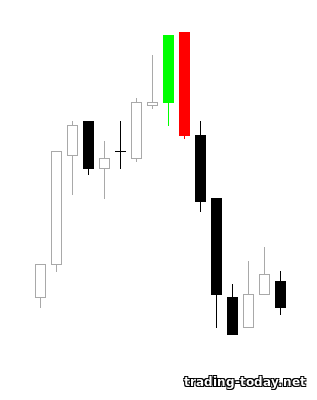
Meeting lines
Colliding candles are an interesting candlestick pattern in which the first upward candle collides with a second downward candle. It is interesting that the second candle begins its formation significantly higher than the high of the first candle, and the closing of the second candle very often occurs at the high of the first candle. Enter immediately after the formation of the second candle.Three stars
Three stars are three dojis formed at the top of a trend and at the same horizontal level. A signal for a further price decrease, although first it is better to wait for a confirming candle - a candle with a downward movement, which should form immediately after the third doji candle.Gravestone doji
A Tombstone Doji is a pin bar formed at a strong resistance level after a strong upward movement. The pin bar should have no body and no shadow below (or a very small shadow). The longer the shadow above, the stronger the reversal pattern. You can enter a bear market immediately after the pin bar appears, or after a confirmation candle.Hanging man
A hanging man is a small candlestick with a long shadow at the bottom at the top of a trend. The color of the candle does not matter - only the shape matters. After the hanging man there should be a candle confirming the reversal - entry into a decline only after it.Belt hold
Belt grab is a candlestick pattern where one downward candle engulfs three previous upward candles. It is formed both at the tops of trend movements and during price corrections. Entry immediately after the engulfing candle.Harami
Harami is a pattern where the first second candle closes approximately in the middle of the first candle. At the same time, their maximums are the same. This formation is worth considering. Like a reversal, but it is better to wait for confirmation in the form of breaking the low of the first candle.Shooting star
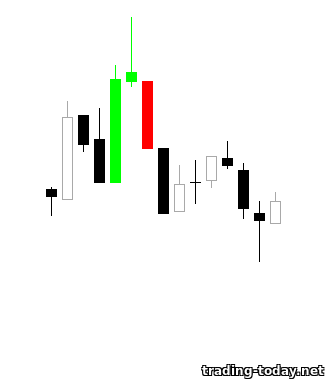
Harami cross
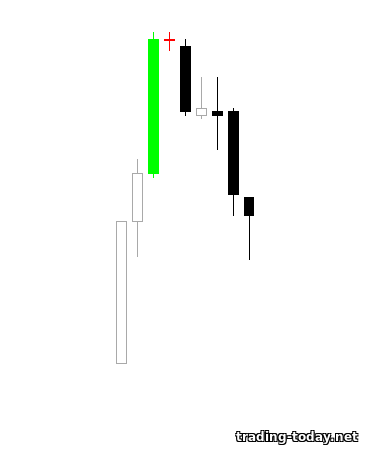
Tweezers top
The top of the tweezers is a formation of one full-bodied rising candle and a candle with a small bearish body and a long shadow below. This pattern is considered a reversal pattern, but it is better to wait until the low of the first candle is broken and only then open a downward trade.Japanese candlestick patterns: summary
Candlestick patterns are not a 100% trading strategy. Moreover, they must be used wisely - filtered by support and resistance levels, oscillators, Fibonacci levels, trend lines, etc. If you take and open a blank price chart and start finding Japanese candlestick patterns on it, the result may be will be positive, but far from the best!There are many models - you should study them gradually. To begin, select 3-4 clear candlestick patterns and try to find them on the emerging charts and open trades on them. Once you are sure that these models are deposited in your memory, begin to study new formations and their practical use.

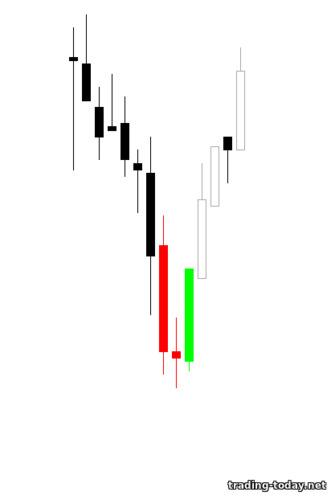
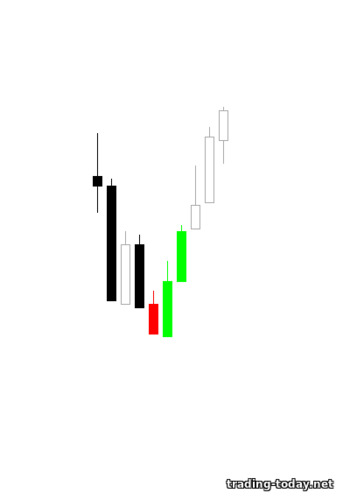
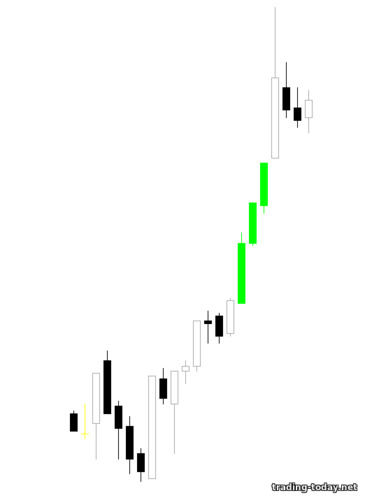
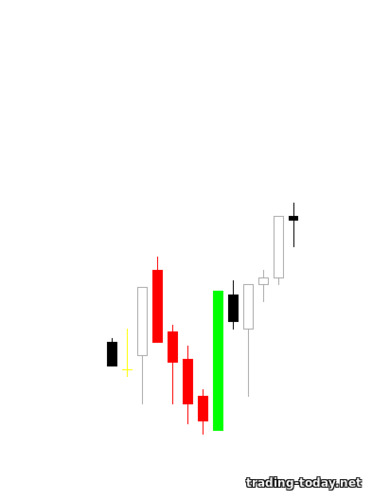
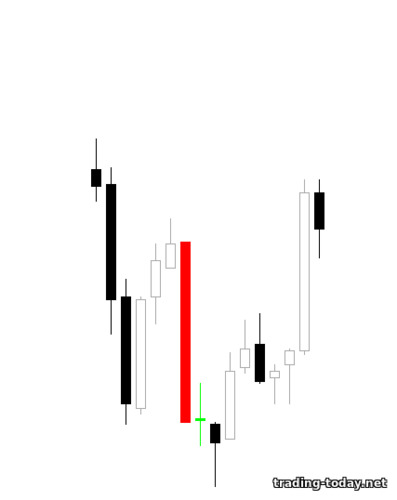
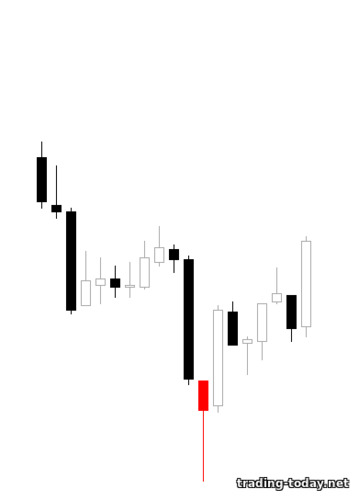
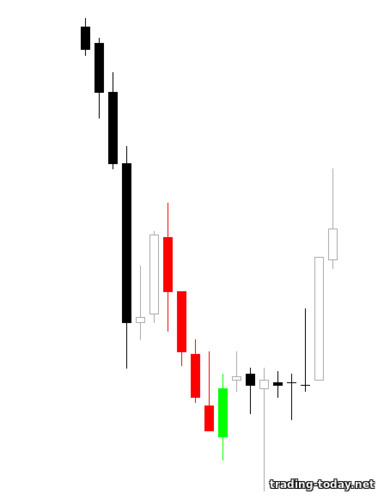
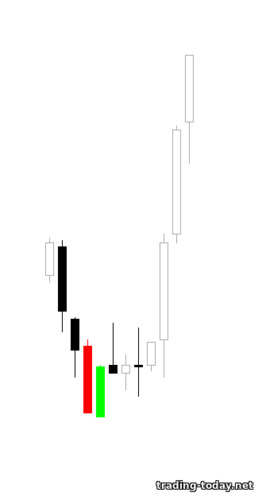
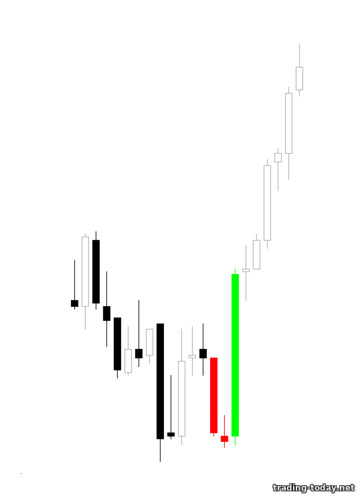
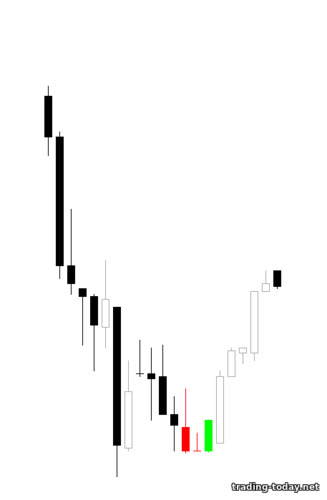
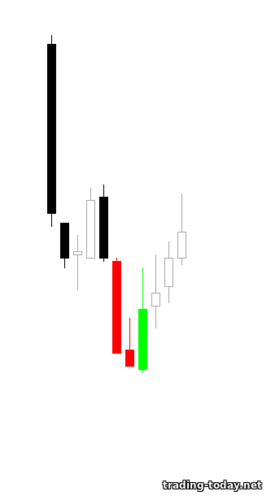
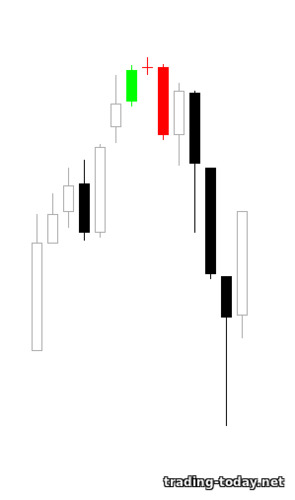
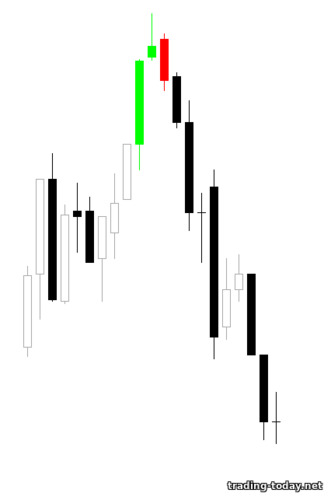
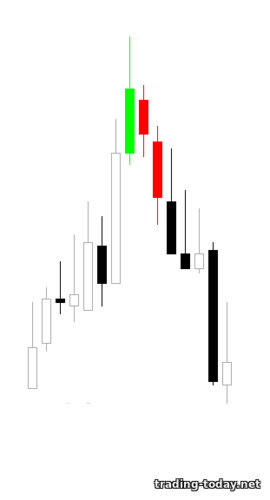
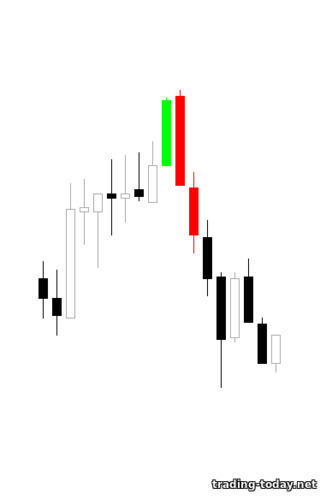
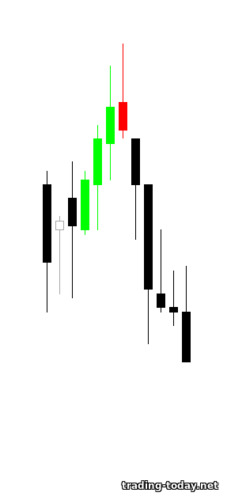
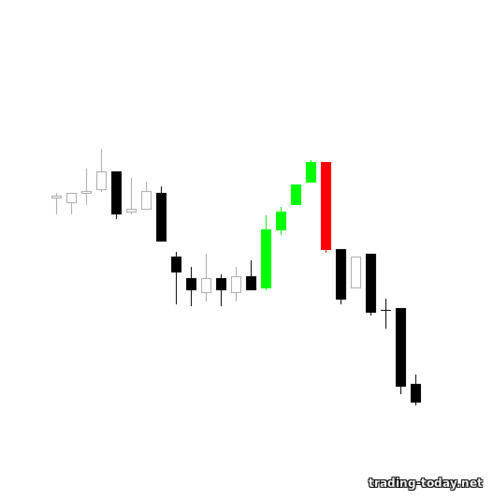
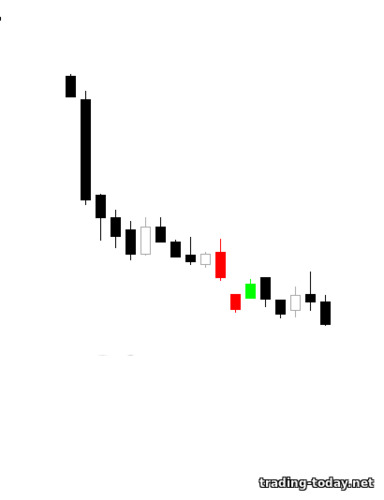
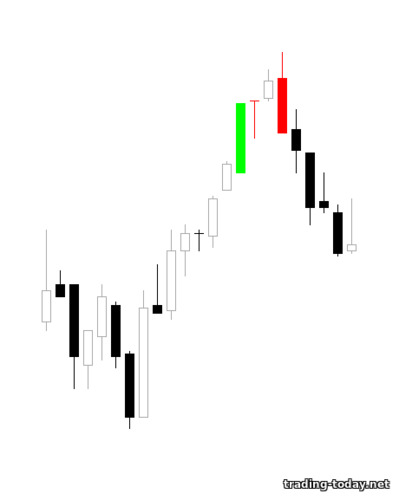
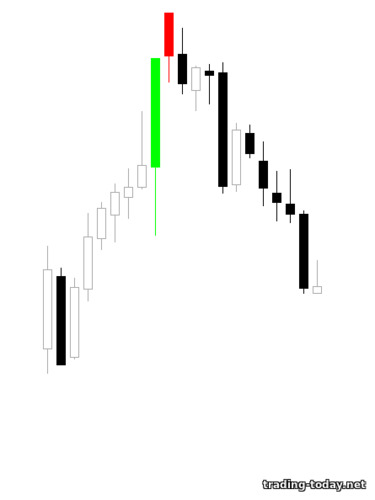
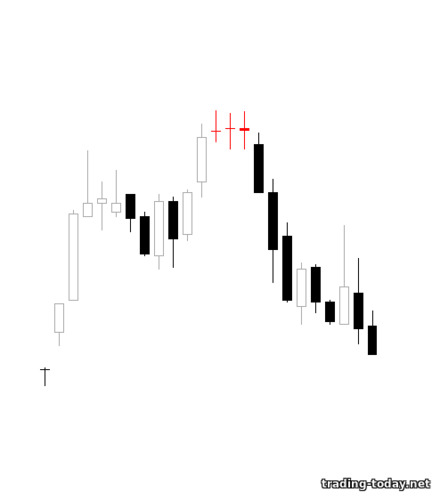
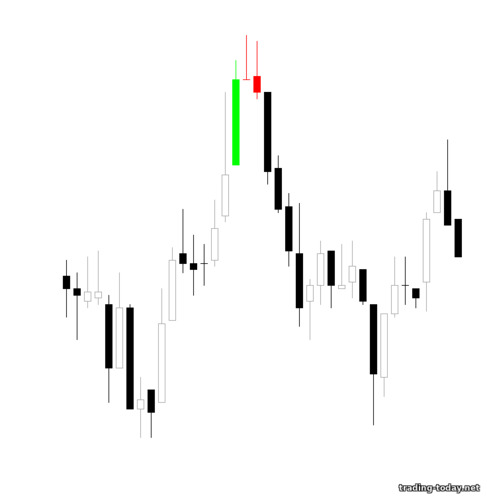
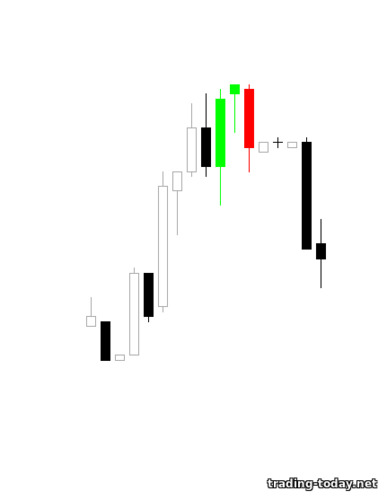

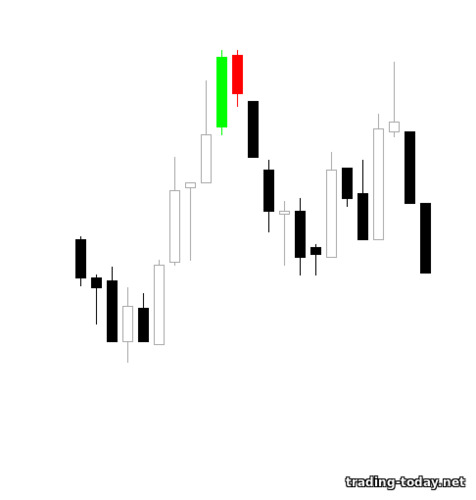
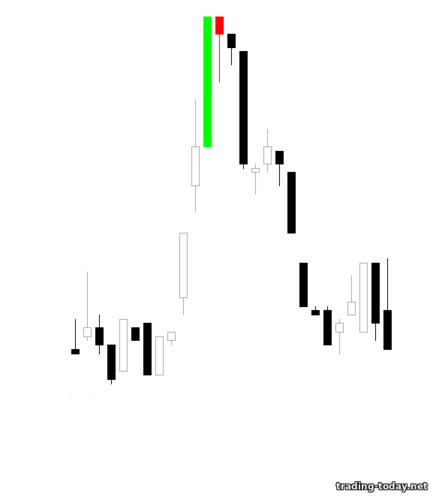

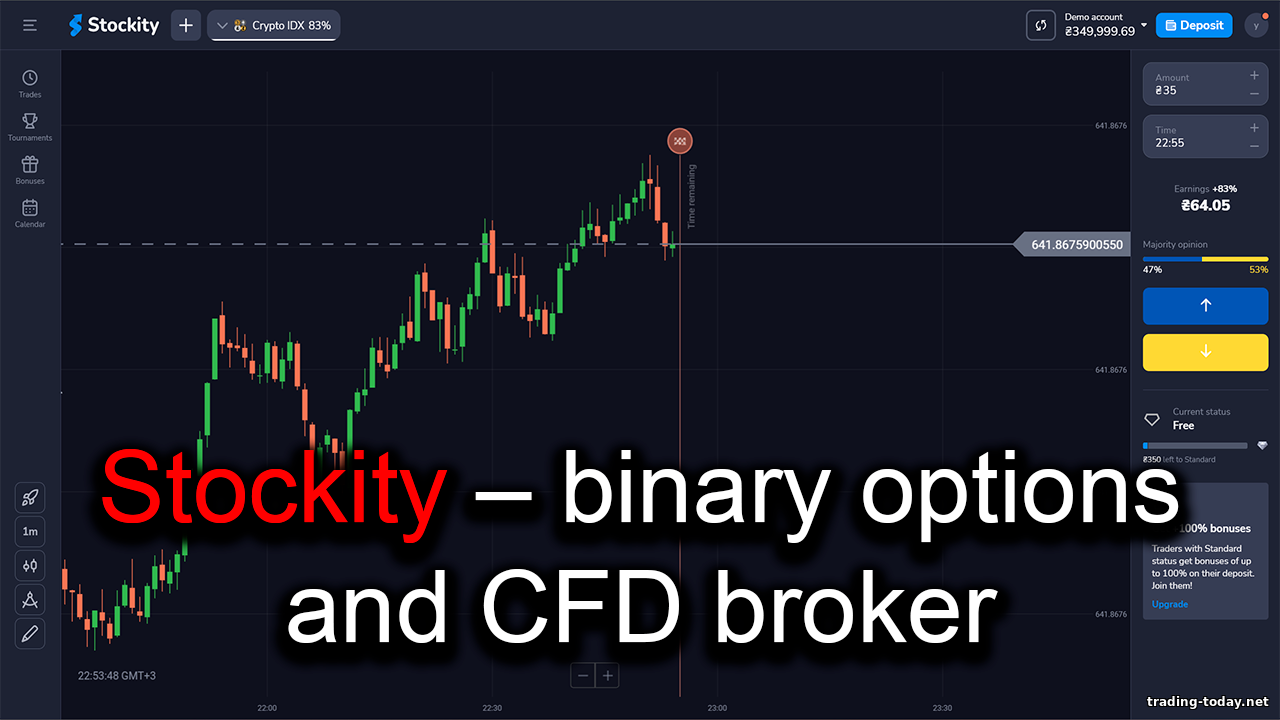





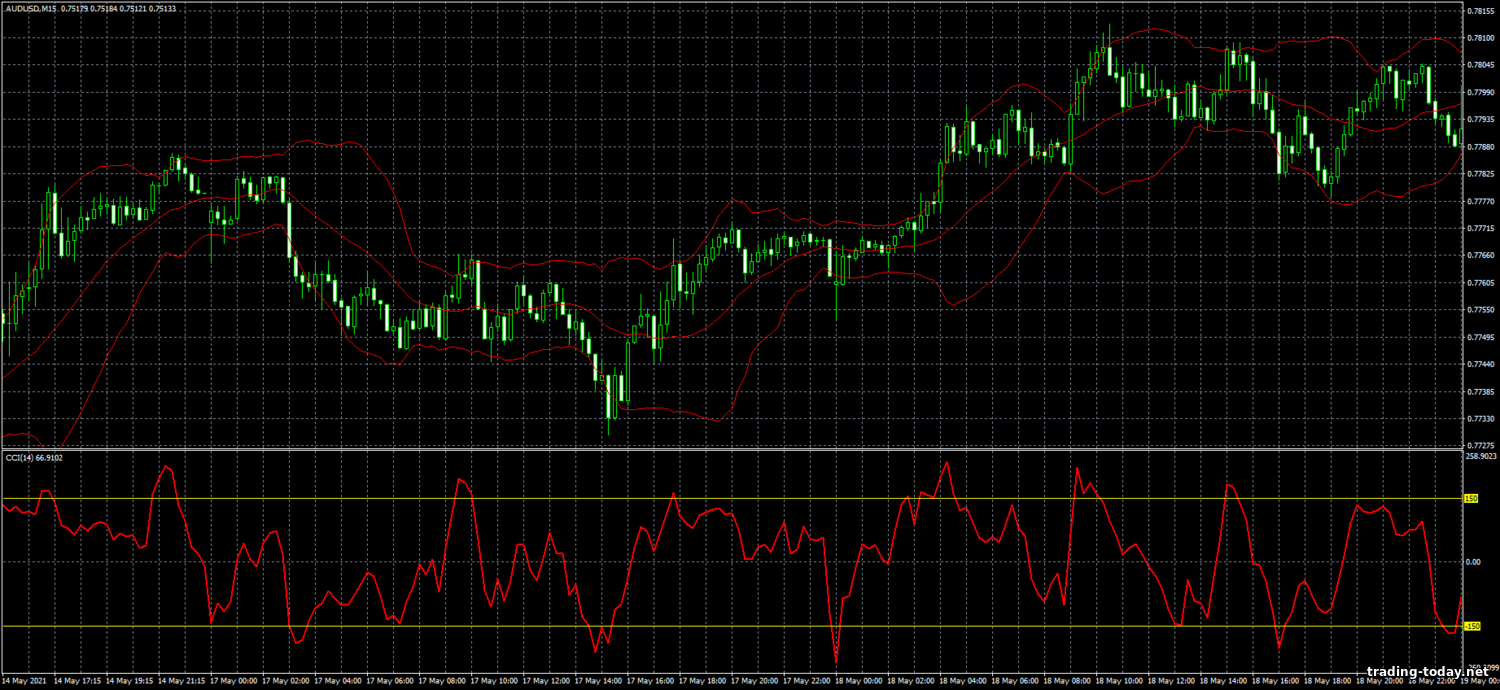

Reviews and comments